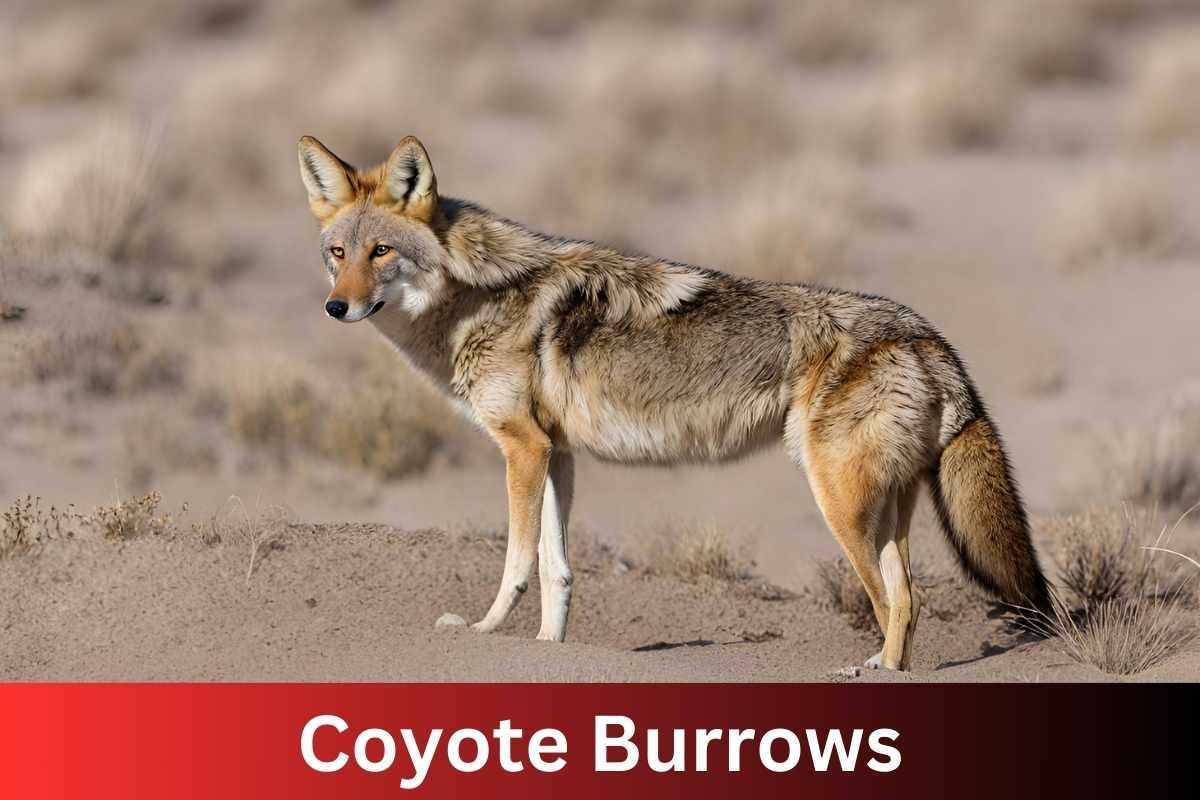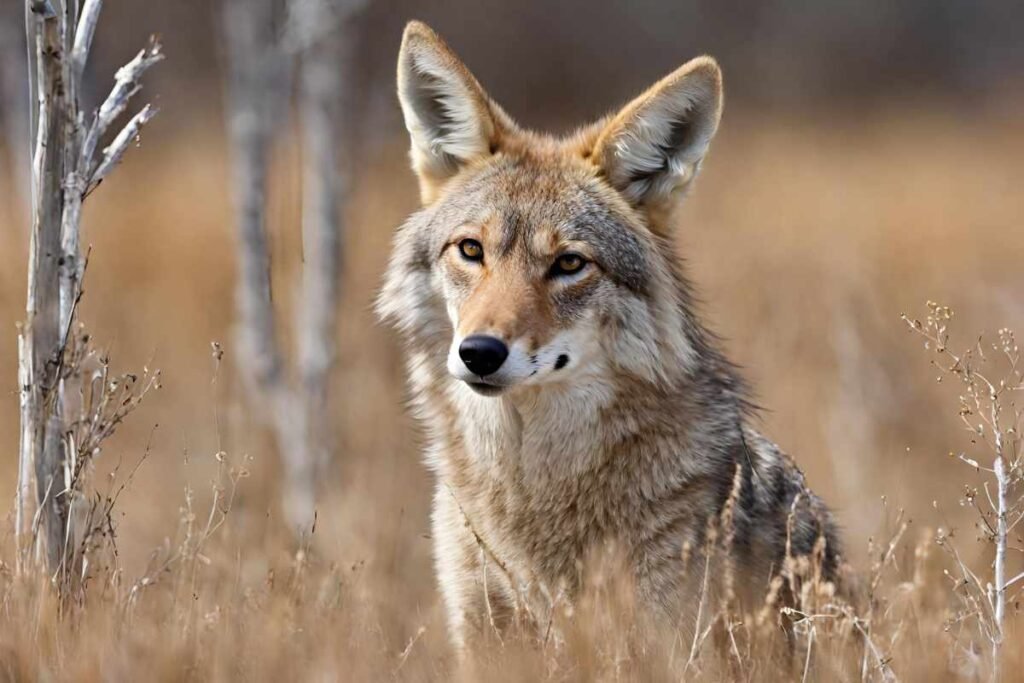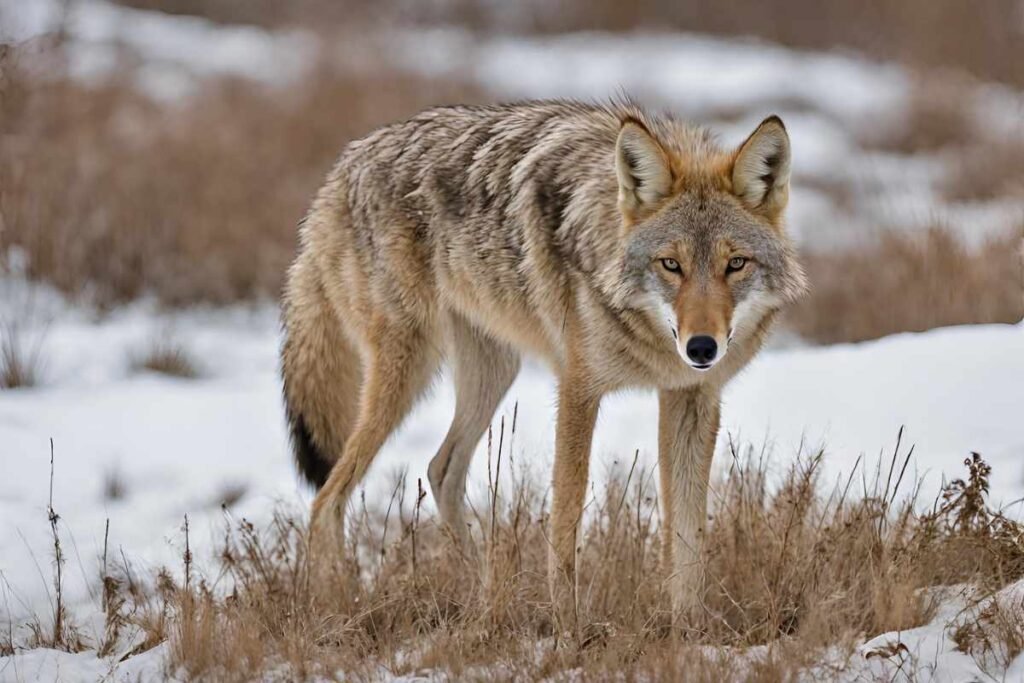
Table of Contents
Welcome to our deep dive into the fascinating world of coyote burrows. Ever wondered where coyotes retreat to after a long day’s hunt? Or how they create cosy nests for their pups?
Join us as we uncover the mysteries of coyote burrows and answer your burning questions about these elusive creatures.
Get ready to embark on a journey of discovery as we explore the intricacies of coyote dens and their importance in the wild.
Coyote Burrows
Coyotes are master architects when it comes to creating their dens.These burrows serve as safe havens for raising their young and provide protection from predators and harsh weather conditions.
Typically, coyote dens can be found in various locations, including hollowed-out tree stumps, rock outcrops, or even abandoned burrows dug by other animals like raccoons or skunks.
Coyote Den Size
The size of a coyote den can vary, but generally, they are about 2 to 4 feet underground and up to 30 feet long.
These underground chambers provide ample space for the coyote family to move around comfortably and raise their pups.
Coyote Nest
Within the den, coyotes create cosy nests using materials like grass, leaves, and fur.
These nests provide warmth and comfort for the newborn pups, ensuring their survival during the vulnerable early stages of life.
How Do You Find a Coyote Den?

Finding a coyote den can be challenging since they are often well-hidden and camouflaged. However, there are some signs to look out for, such as disturbed soil near potential den entrances, tracks, or the presence of coyote scat.
It’s essential to keep a safe distance and avoid disturbing the coyotes while observing their denning sites.
Structural Variations
Coyote burrows can vary in structure based on the terrain and environmental conditions. In areas with softer soil, the burrows may be deeper and more extensive to provide stability and protection from predators and inclement weather.
Multiple Entrances
Coyote dens often feature multiple entrances, which serve as escape routes and provide ventilation.
These entrances may be strategically located to maximise security and minimise the risk of detection by predators or human intruders.
Camouflaging Techniques
Coyotes are skilled at camouflaging their dens to blend in with their surroundings.
They may use natural materials such as leaves, twigs, and grass to conceal the entrances and minimise the visibility of the den from predators and prey alike.
Maintenance and Renovation

Coyotes are known to maintain and renovate their dens regularly, especially during pupping season.
They may reinforce the walls and entrances of the burrow, remove debris, and add fresh bedding to create a comfortable and safe environment for their young.
Den Sharing
While coyotes are territorial animals, they may occasionally share dens with other members of their pack or even other species.
This behaviour is more common during extreme weather conditions or when resources are scarce, and it helps to conserve energy and maximise survival chances for all occupants.
Scent Marking
Coyotes use scent marking to communicate with other members of their pack and to assert their territorial boundaries.
They may urinate or defecate near the entrances of their dens to deter intruders and signal ownership of the territory.
Seasonal Variations
The use of coyote dens may vary seasonally, with dens being more heavily utilised during pupping season (spring to early summer) when females give birth and raise their young.
Outside of pupping season, coyotes may sleep above ground or in makeshift shelters.
Predation Risks
Coyote dens are vulnerable to predation by larger predators such as bears, mountain lions, and wolves.
Coyotes employ various strategies to minimise the risk of predation, including locating dens in secluded areas, choosing burrow sites with good visibility, and remaining vigilant for potential threats.
Human Interaction
Encounters between coyotes and humans near dens can occur, especially in urban or suburban areas.
It’s essential for people to maintain a safe distance from dens and avoid disturbing coyotes or their offspring to prevent conflicts and ensure the safety of both humans and wildlife.
Ecological Importance

Coyote dens play a crucial role in ecosystem dynamics by providing shelter for coyotes and other wildlife species,
Contributing to soil aeration and nutrient cycling, and supporting plant growth through burrow excavation and soil disturbance.
Ecological Role
Coyote dens contribute to the ecosystem by aerating the soil and creating habitats for other small animals. Their presence helps maintain biodiversity and ecological balance in their habitats.
Adaptability
Coyote dens showcase the adaptability of these animals to various environments. Whether in urban, suburban, or rural areas, coyotes demonstrate their ability to find suitable denning sites and adjust their behaviour to coexist with human populations.
Conclusion
Coyote burrows serve as remarkable shelters, providing security and safety for these resourceful animals. By delving into their denning behaviour, we gain insights into their intricate ecological role.
Understanding their habits fosters coexistence and appreciation, promoting harmony between humans and wildlife. These dens, with their multiple entrances and camouflaging techniques, showcase the adaptability and resilience of coyotes in diverse habitats.
Let’s cherish these marvels of nature and strive to preserve their habitats for future generations to appreciate and enjoy.
FAQs
How Do Coyotes Burrow?
Coyotes are skilled diggers and use their strong claws to excavate burrows in various types of soil.
They may dig their own dens or enlarge existing holes dug by other animals, such as badgers.
What To Do If You See a Coyote Den?
If you come across a coyote den, it’s essential to maintain a safe distance and avoid approaching the area.
Respect the coyotes’ space and observe from afar without disturbing their natural behaviour.
What Does a Coyote’s Den Look Like?
Coyote dens can vary in appearance, but they often resemble small mounds of dirt with concealed entrances.
They may blend seamlessly into their surroundings, making them challenging to spot for the untrained eye.
How Do You Know If a Coyote Den Is Active?
Signs of an active coyote den include fresh tracks, scat, and evidence of recent digging around the entrance.
Additionally, sightings of adult coyotes entering or leaving the den site indicate that it is currently in use.
How Deep Is a Coyote Den?
Coyote dens can range from a few feet to several feet underground, depending on the soil composition and terrain.
In general, they dig deep enough to provide adequate protection and in



Leave a Reply